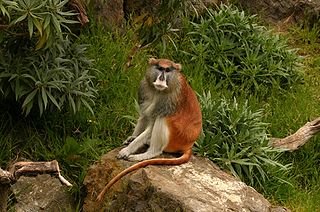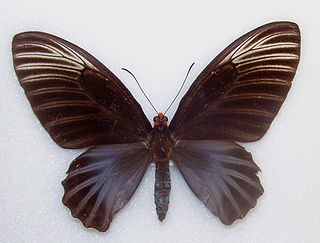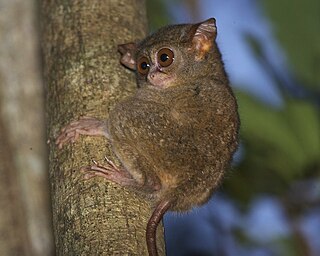
The International Union for Conservation of Nature (IUCN) Red List of Threatened Species, also known as the IUCN Red List or Red Data Book, founded in 1964, is an inventory of the global conservation status and extinction risk of biological species. A series of Regional Red Lists, which assess the risk of extinction to species within a political management unit, are also produced by countries and organizations.

The macaques constitute a genus (Macaca) of gregarious Old World monkeys of the subfamily Cercopithecinae. The 23 species of macaques inhabit ranges throughout Asia, North Africa, and Europe. Macaques are principally frugivorous, although their diet also includes seeds, leaves, flowers, and tree bark. Some species such as the long-tailed macaque will supplement their diets with small amounts of meat from shellfish, insects, and small mammals. On average, a southern pig-tailed macaque in Malaysia eats about 70 large rats each year. All macaque social groups are arranged around dominant matriarchs.

Erythrocebus is a genus of Old World monkey. All three species in this genus are found in Africa, and are known as patas monkeys. While previously considered a monotypic genus containing just E. patas, a 2017 review argued that, based on morphological evidence and heavy geographic separation between taxa, E. patas should be split back into distinct species as recognised in the 19th century.

Presbytis is a genus of Old World monkeys also known as langurs, leaf monkeys, or surilis. Members of the genus live in the Thai-Malay Peninsula, on Sumatra, Borneo, Java and smaller nearby islands.

Leptotyphlops is a genus of nonvenomous blind snakes, commonly known as slender blind snakes and threadsnakes, in the family Leptotyphlopidae. The genus is endemic to and found throughout Africa. Eleven species have been moved to the genus Trilepida, and other species have been moved to the genera Epacrophis, Epictia, Mitophis, Myriopholis, Namibiana, Rena, Siagonodon, Tetracheilostoma, and Tricheilostoma.

Atrophaneura nox, the Malayan batwing, is a papilionid butterfly found in Java, northern Borneo and Peninsular Malaysia.

A species that is extinct in the wild (EW) is one that has been categorized by the International Union for Conservation of Nature as only consisting of living members kept in captivity or as a naturalized population outside its historic range. Classification requires exhaustive surveys conducted within the species' known habitat with consideration given to seasonality, time of day, and life cycle. Once a species is classified as EW, the only way for it to be downgraded is through reintroduction.
The brown-banded rail is a species of bird in the family Rallidae. It is endemic to the Philippines, known from Luzon and Samar. Details about its life and breeding are not known. Its habitat is listed to be cloudforest, near pine forest and undisturbed river swamp and is found at 500–2,250 meters. It is largely known from migration records of 200 sightings from 1965 to 1970 at Dalton Pass so it is thought to be migratory. The most recent sighting was in 2001 and the call is described as "frog-like accelerating series of clicking notes". The threats are not exactly known but it has been and is continuing to be hunted at Dalton Pass.

The serow, is any of four species of medium-sized goat-like or antelope-like mammals in the genus Capricornis. All four species of serow were, until recently, classified under Naemorhedus, which now only contains the gorals.

Tarsius is a genus of tarsiers, small primates native to islands of Southeast Asia. Until 2010, all tarsier species were typically assigned to this genus, but a revision of the family Tarsiidae restored the generic status of Cephalopachus and created a new genus Carlito.

Allochrocebus is a primate genus including the terrestrial guenons: the L'Hoest's monkey, the Preuss's monkey, and the sun-tailed monkey.
Danionella mirifica is a species of cyprinid fish. It is endemic to northern Myanmar and only known from its type locality in Myitkyina District. It is a small species, growing to 1.4 cm (0.55 in) standard length.










